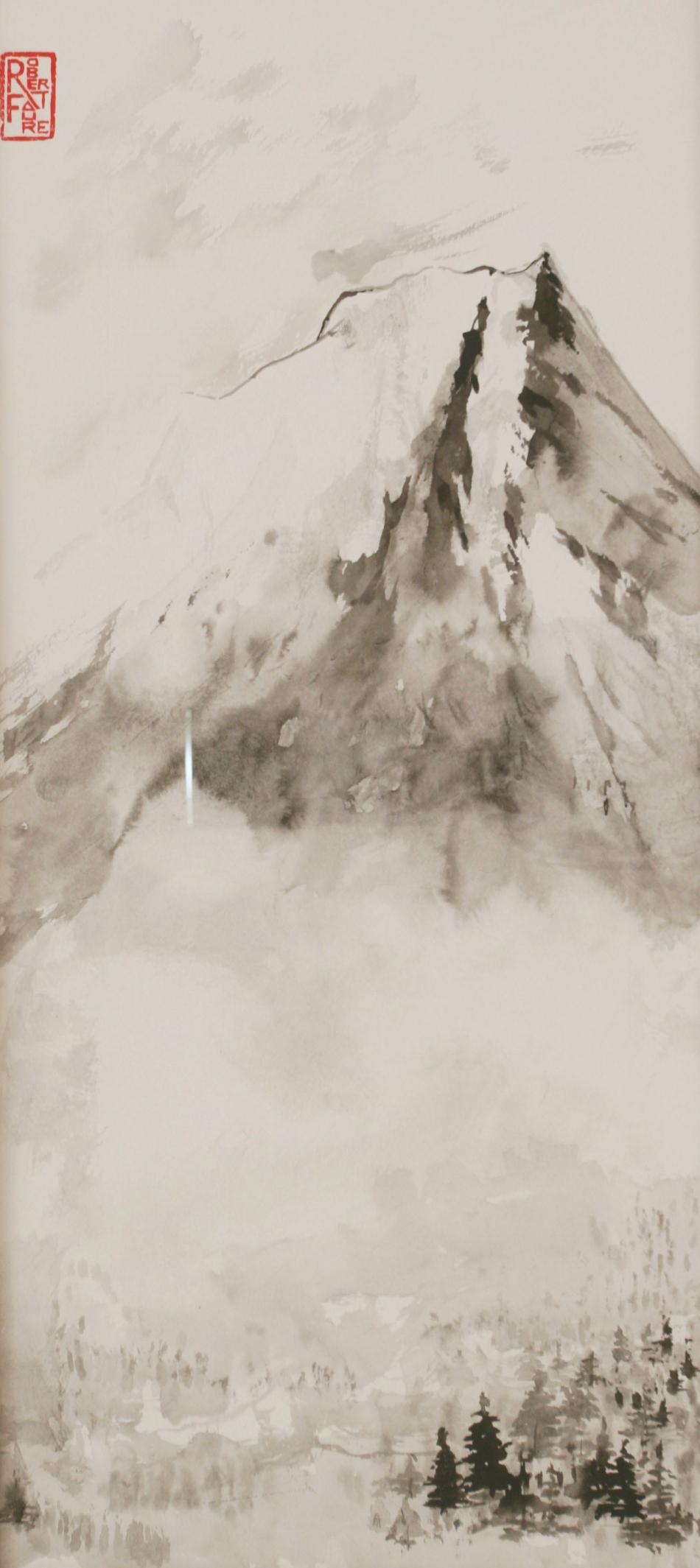For more than 20 centuries China, then later Japan, have expressed human sentiment, the dream, man’s admiration for the nature with the same traced elegance and the 3000 nuances of grey which separates the pureness of white and the profound obscurity of black.
It was particularly in the schools of thought of ancient China that was developed the tch’an painting of nature. The fruit of a sustained, meticulous observation of one element of nature: flower, bamboo, forest, landscape…..Then the tch’an artist with out precipitation will prepare himself in a moment of silence, during which he undertakes an internal preparation. He prepares his ink, calms his emotions, his breathing, his spirit.
 |
| Apprivoise la montagne et tu te connaîtras © |
Then, in an apparently spontaneous fashion, with speed and sometimes flamboyance, begins to represent the nature. In a few moments everything falls into place: clouds in the sky, the outlines of the mountains, their snowy slopes, the mist floating over the valley and the pine forest below with the small stream flowing through it. Without forgetting the white spaces that will stay, unlike in western painting, preserved and untouched by the brush.
This art form was also rooted in Japan, especially in the Zen Buddhist monasteries and is known to this day in Japanese as “sumi-e” or Zen calligraphy.
Our sense of wonder remains intact as we discover today these landscapes of black and white which express both the energy and the palpitation dynamism of life. It is all about “merging the energy of the typhoon with that in a blade of grass” as an old Japanese master calligrapher put it.
Today, this art of painting is still taught in China, in Japan, in the West, and, closer to home, in the Provence-Côte d’Azur region of France. You do not have to know how to draw. Chan and Zen calligraphy is all about teaching people to see properly, to draw on their breathing and translate it into brush-strokes on paper, to learn how to fine-tune our senses and channel them patiently. In an age when we can control complex computers with our finger-tips, compose painting with software and retouch photos, or move around in a virtual reality, the human hand is still the shortest path to true creativity.
Ink calligraphy teaches one about fluency, accuracy and vivacity. It develops self-confidence and less concern for details. Above all, it is a door opening onto the right gesture, unstressed, removed from the cares and hurly-burly of daily life. As one old master once said: “We will only achieve perfection in our brush strokes once we have given up trying to achieve it.”